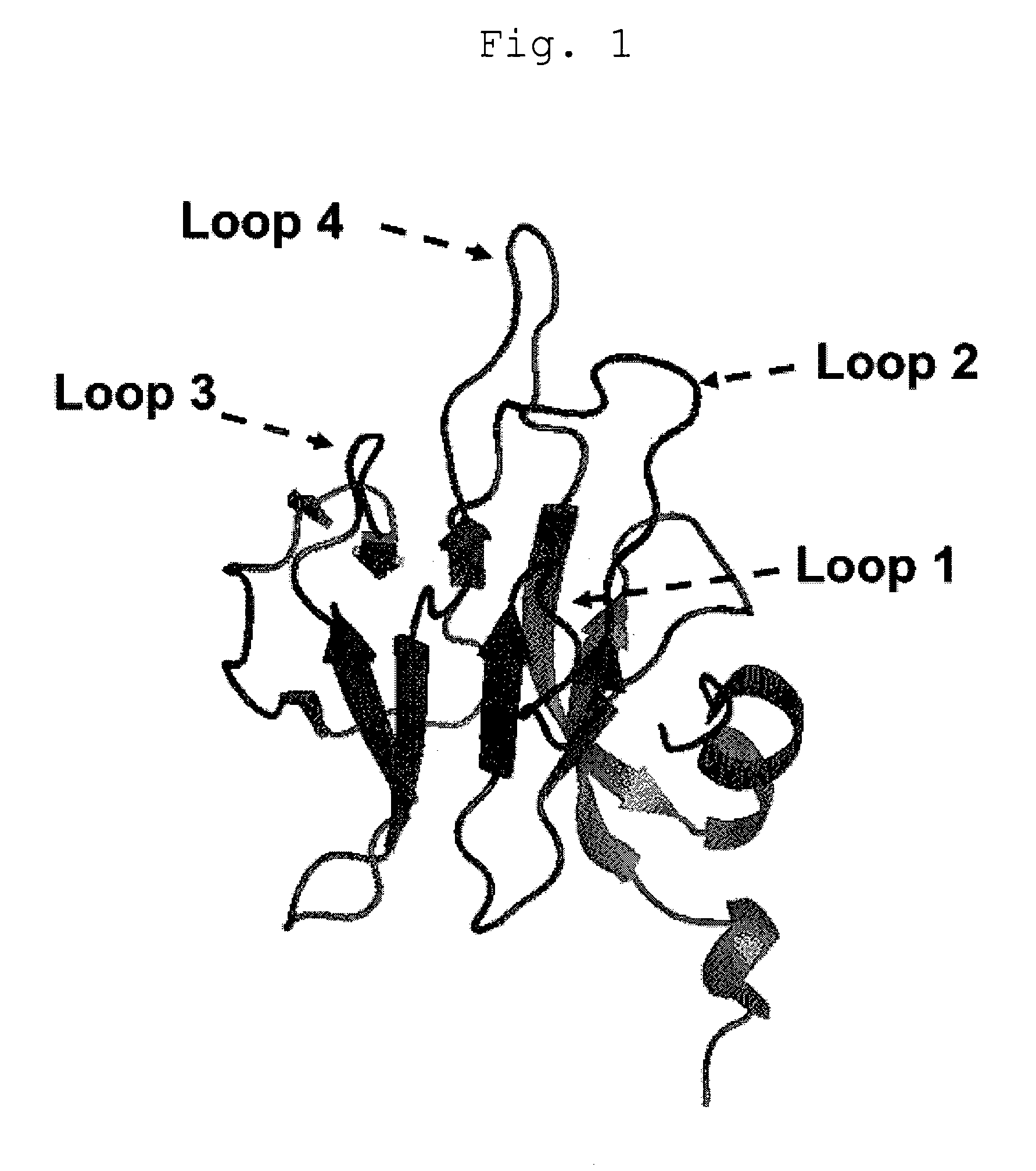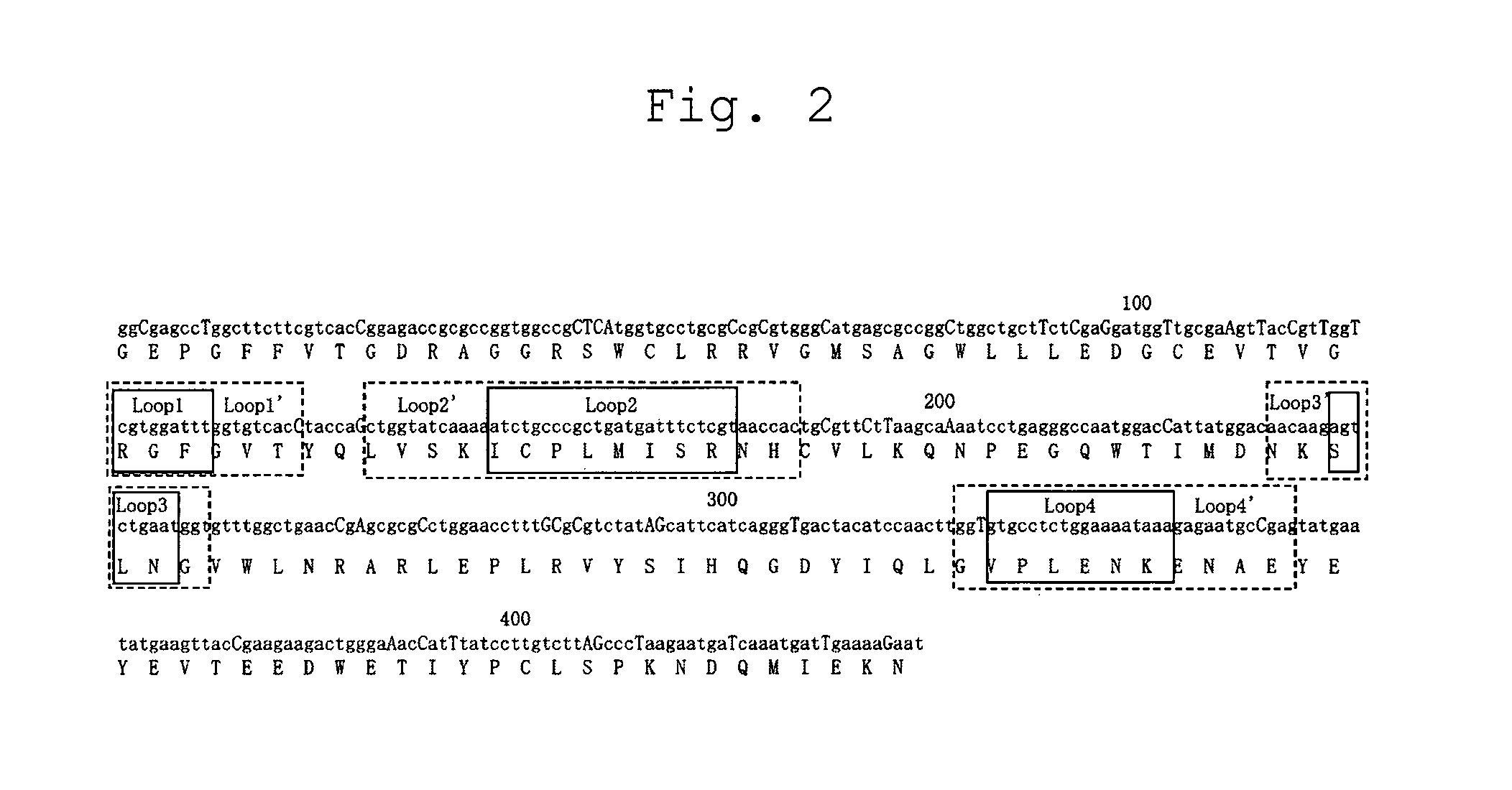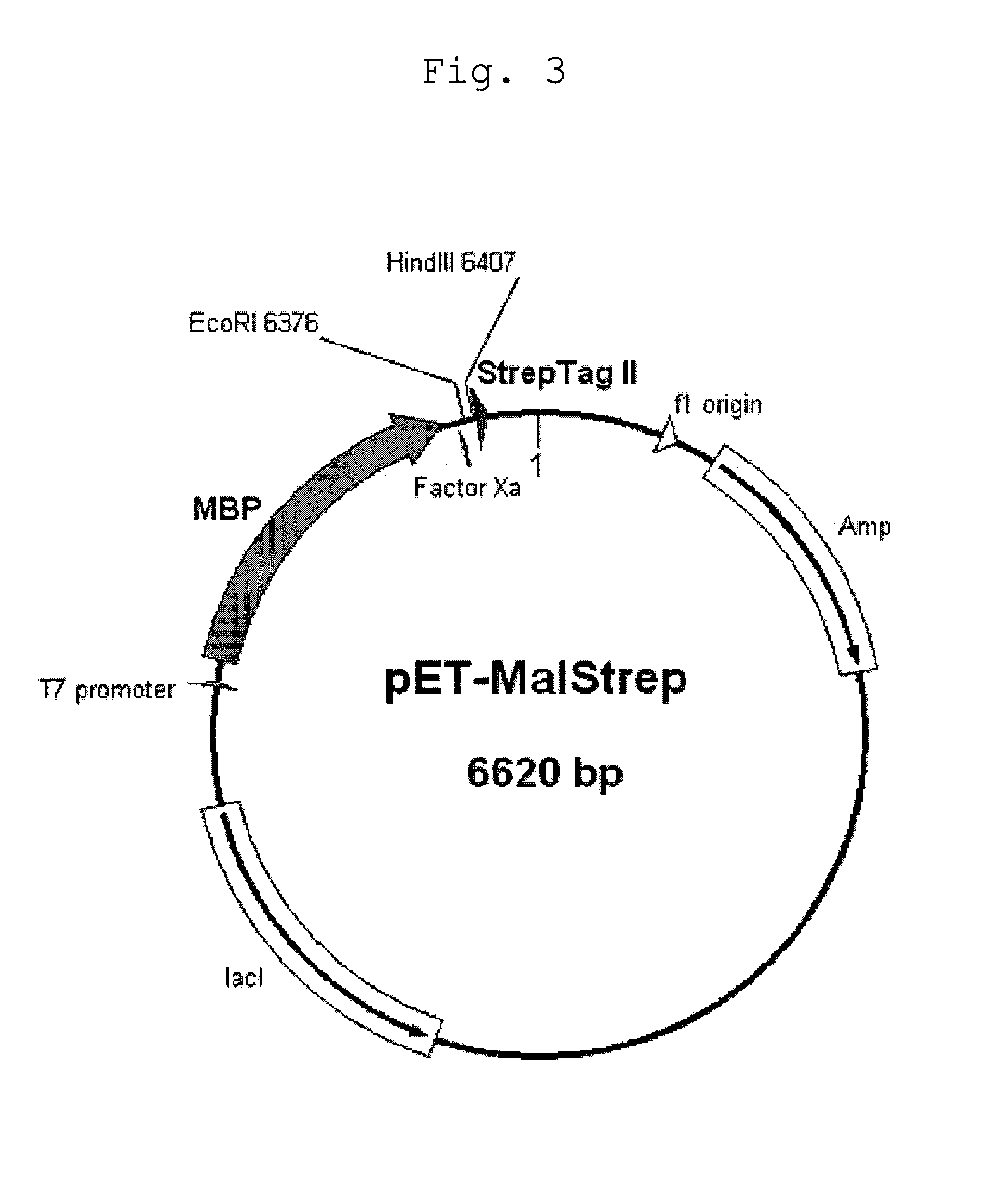RNF8-FHA domain-modified protein and method of producing the same
a technology of ubiquitin ligase and rnf8, which is applied in the field of e3 ubiquitin ligase rnf8 fha domain-modified protein, can solve the problems of reducing binding activity, unable to analyze post-translationally modified targets, and unable to achieve cell transformation efficiency, etc., and achieves the effect of reducing the ligation efficiency of the antibody library onto the vector and cell transformation efficiency
- Summary
- Abstract
- Description
- Claims
- Application Information
AI Technical Summary
Benefits of technology
Problems solved by technology
Method used
Image
Examples
examples
Construction of RNF8-FHA Domain Library
[0062]Based on the conformation of the FHA domain of RNF8 (FIG. 1, PDB code: 2PIE), an RNF8 library comprising four randomized (NNS) loops of the FHA domain of RNF8 (FIG. 2, SEQ ID NO:1) was designed and chemically synthesized as a fragment 140 bases or less (FASMAC). The regions to be randomized were the regions of the RNF8 protein surrounded with squares in FIG. 2, which consist of the 41 st-43 rd amino acid residues, the 53 rd-60th amino acid residues, the 80th-82 nd amino acid residues, and the 109th-114th amino acid residues, respectively. For the library genes, socalled optimal codons (capitalized in FIG. 2) were used for the sake of high protein expression. Also a 5′ UTR sequence comprising a T7 promoter and the SD sequence with the FLAG sequence added to the 3′ end thereof, which are required in performing ribosome display, was chemically synthesized (FASMAC). Each underlined region indicates a region complemented (overlapped) by each o...
PUM
| Property | Measurement | Unit |
|---|---|---|
| pH | aaaaa | aaaaa |
| volume | aaaaa | aaaaa |
| concentration | aaaaa | aaaaa |
Abstract
Description
Claims
Application Information
 Login to View More
Login to View More - R&D
- Intellectual Property
- Life Sciences
- Materials
- Tech Scout
- Unparalleled Data Quality
- Higher Quality Content
- 60% Fewer Hallucinations
Browse by: Latest US Patents, China's latest patents, Technical Efficacy Thesaurus, Application Domain, Technology Topic, Popular Technical Reports.
© 2025 PatSnap. All rights reserved.Legal|Privacy policy|Modern Slavery Act Transparency Statement|Sitemap|About US| Contact US: help@patsnap.com



